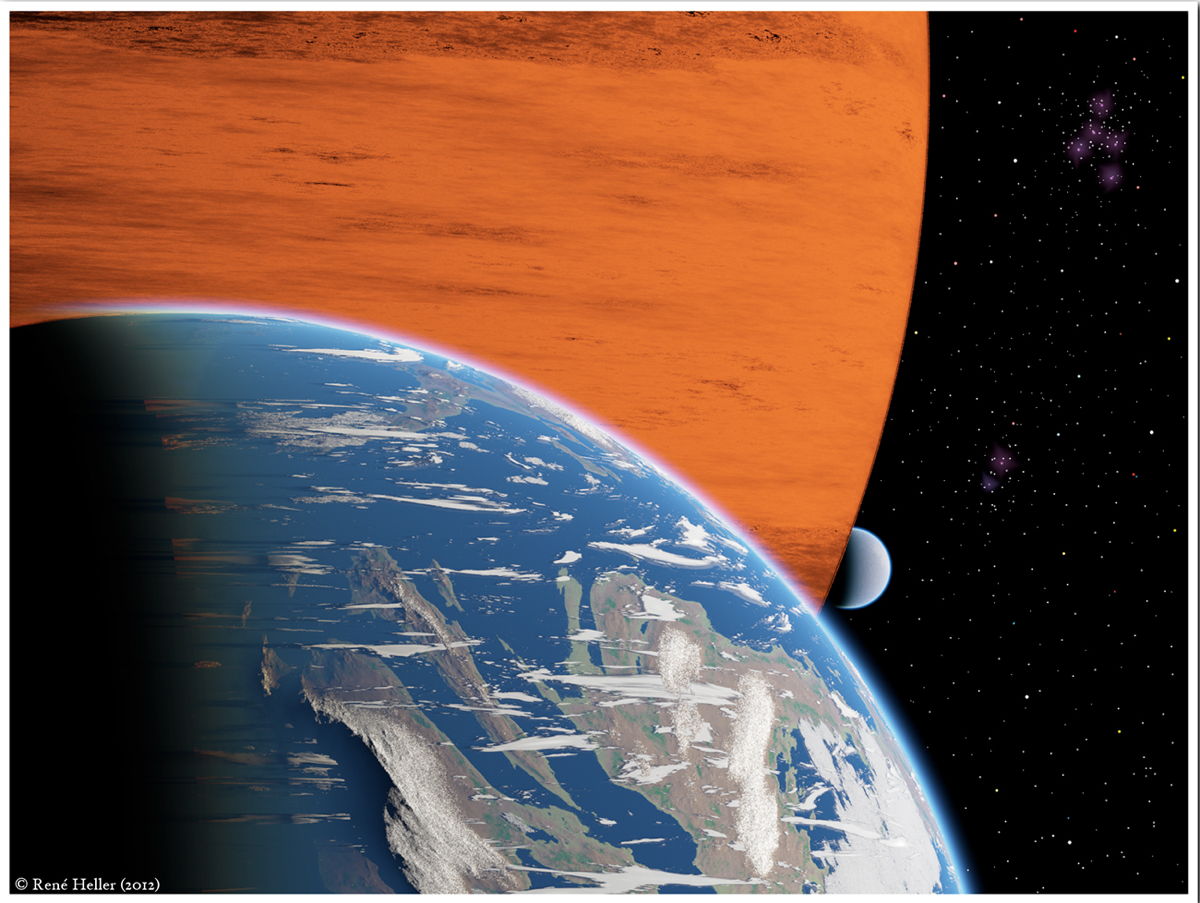Alien Life May Exist on Exoplanet Moons

In the search for an Earth-like alien world, astronomers have had their eyes set on planets beyond our solar system, but some moons orbiting some of these exoplanets may be just as likely to support life, scientists say.
Astronomers have discovered more than 800 exoplanets, with many more candidate worlds awaiting confirmation by follow-up observations. Most of them, however, are gas giants, similar to Jupiter, and only a handful have a solid surface and orbit their host stars in the habitable zone, the range where liquid water, and perhaps life as we know it, can exist.
But a team of astronomers says these uninhabitable exoplanets could host habitable exomoons.
"There is a habitable zone for exomoons, it's just a little different than the habitable zone for exoplanets," Rory Barnes of the University of Washington and the NASA Astrobiology Institute said in a statement.
Barnes and René Heller of Germany's Leibniz Institute for Astrophysics Potsdam explained that considerations about climate and light would be very different for exomoons compared with exoplanets.
Like Earth's moon, many exomoons are tidally locked to their host planet, meaning one hemisphere is permanently turned away from the planet, which would constrain the habitable regions on the moon's surface. Moons also have two sources of light — one from their star and the other from their host planet — and are subject to dramatic eclipses.
"An observer standing on the surface of such an exomoon would experience day and night in a totally different way than we do on Earth." explained Heller. "For instance, stellar eclipses could lead to sudden total darkness at noon."
Breaking space news, the latest updates on rocket launches, skywatching events and more!
The astronomers, whose research is detailed in the January issue of the journal Astrobiology, say the effects of tidal heating must be considered when determining an exomoon's habitability. Moons that orbit their planet too closely will experience strong tidal heating and a runaway greenhouse effect that would boil away any surface water.
Though no habitable exomoons have been found, Barnes and Heller say there's no reason to assume they don't exist.
Some researchers have already started thinking about how they might use instruments like the planet-hunting Kepler Space Telescope to detect alien moons. Telescopes such as Kepler search for planets as they transit, or cross in front of, their star, causing telltale dips in the star's brightness. Variations in these brightness patterns might reveal the presence of a moon orbiting a planet.
Follow SPACE.com on Twitter @Spacedotcom. We're also on Facebook and Google+.

Megan has been writing for Live Science and Space.com since 2012. Her interests range from archaeology to space exploration, and she has a bachelor's degree in English and art history from New York University. Megan spent two years as a reporter on the national desk at NewsCore. She has watched dinosaur auctions, witnessed rocket launches, licked ancient pottery sherds in Cyprus and flown in zero gravity on a Zero Gravity Corp. to follow students sparking weightless fires for science. Follow her on Twitter for her latest project.

